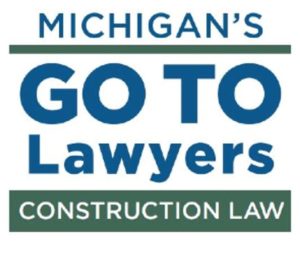On the heels of the auto industry and manufacturing returning to work, it is widely expected that other Michigan employers will be allowed to resume operations in the next few weeks. Each business that is allowed to resume operations has a number of steps that it must address in order to comply with State and Federal Law.
For Michigan businesses, resuming operations is not as easy as unlocking the doors and turning the lights back on.
Step One: Make Sure Your COVID-19 Plan is in Order
Michigan businesses are opening pursuant to Executive Orders issued by the Governor. Executive Order 2020-91 issued on May 18th, requires each business that is allowed to operate to develop a COVID-19 preparedness and response plan by June 1st or within two weeks of resuming in-person operations, whichever is later. The plan must address many issues including:
- Sources of COVID-19 in the workplace;
- Non-occupational risk factors that may introduce COVID-19 to the workplace;
- Employee’s individual risk factors;
- Controls necessary to address risks;
- Preparation and implementation of Basic Infection Prevention Measures
- Policies and procedures for prompt identification and isolation of sick employees;
- Development and identification of workplace flexibilities and protections;
- Development and implementation of administrative, engineering and safe work practice controls based on classification of potential employee exposure to COVID-19; and
- Identification of appropriate personal protective equipment.
The plan must be readily available to employees, labor unions, and customers via the employer’s website, internal network, or by hard copy. In addition, employers are required to designate an on-site supervisor to administer the plan at all times employees are on-site. Employers that have been allowed to operate prior to Executive Order 2020-91 must also have a preparedness and response plan in place.
Step Two: Train Your Employees
Executive Order 2020-91 requires that employees be trained regarding workplace infection control practices, the proper use of personal protective equipment, the steps necessary to report any symptoms of COVID-19 or a suspected or confirmed diagnosis, and how to report unsafe working conditions.
Step Three: Implement Required Practices and Rules to Minimize Risk
The Executive Order also requires that the following specific steps be taken by all employers:
- Conduct a daily entry self-screening protocol for all employees or contractors entering the workplace, including, at a minimum, a questionnaire covering symptoms and suspected or confirmed exposure to people with possible COVID-19.
- Keep everyone on the worksite premises at least six feet from one another to the maximum extent possible and by using ground markings, signs, and physical barriers, as appropriate to the worksite.
- Provide non-medical grade face coverings to their employees, with supplies of N95 masks and surgical masks reserved, for now, for health care professionals, first responders (e.g., police officers, firefighters, paramedics), and other critical workers.
- Require face coverings to be worn when employees cannot consistently maintain six feet of separation from other individuals in the workplace, and consider face shields when employees cannot consistently maintain three feet of separation from other individuals in the workplace.
- Increase facility cleaning and disinfection to limit exposure to COVID-19, especially on high-touch surfaces (e.g., door handles), paying special attention to parts, products, and shared equipment (e.g., tools, machinery, vehicles).
- Adopt protocols to clean and disinfect the facility in the event of a positive COVID-19 case in the workplace.
- Make cleaning supplies available to employees upon entry and at the worksite and provide time for employees to wash hands frequently or to use hand sanitizer.
- When an employee is identified with a confirmed case of COVID-19, within 24 hours, notify both the local public health department, and any co-workers, contractors, or suppliers who may have come into contact with the person with a confirmed case of COVID-19.
- Follow Executive Order 2020-36, and any executive orders that follow it, that prohibit discharging, disciplining, or otherwise retaliating against employees who stay home or who leave work when they are at particular risk of infecting others with COVID-19.
- Establish a response plan for dealing with a confirmed infection in the workplace, including protocols for sending employees home and for temporary closures of all or part of the worksite to allow for deep cleaning.
- Restrict business-related travel for employees to essential travel only.
- Encourage employees to use personal protective equipment and hand sanitizer on public transportation.
- Promote remote work to the fullest extent possible.
- Adopt any additional infection-control measures that are reasonable in light of the work performed at the worksite and the rate of infection in the surrounding community.
Step Four: Implement Industry Specific Rules and Practices
In addition to the steps identified above that are required of all employers, the Executive Order requires additional protocols to be implemented and followed by employers engaged in:
- manufacturing
- traditional outdoor work such as landscaping
- construction
- retail operations
- office work
- restaurants and bars
The specific requirements for each of these types of operations are also included in Executive Order 2020-91.
Step Five: Be Mindful of the Consequences of Non-Compliance
The Executive Order provides that any business violating any of the rules will be deemed to have failed to provide a safe place of employment that is free from recognized hazards that are causing or likely to cause, death or serious physical harm to an employee within the meaning of the Michigan Occupational Safety and Health Act. This is a very serious mandate. Failure to provide a safe place of employment can open the door to employees refusing to report to work and potential fines, penalties and even civil causes of action by anyone that suffers harm as a result of such failure thus making it imperative that all of these steps be followed.
The Employment Practice Group at Rhoades McKee can assist your business in preparation of the required COVID-19 Preparedness and Response Plan as well as compliance with the requirements specific to your industry.
More Publications


